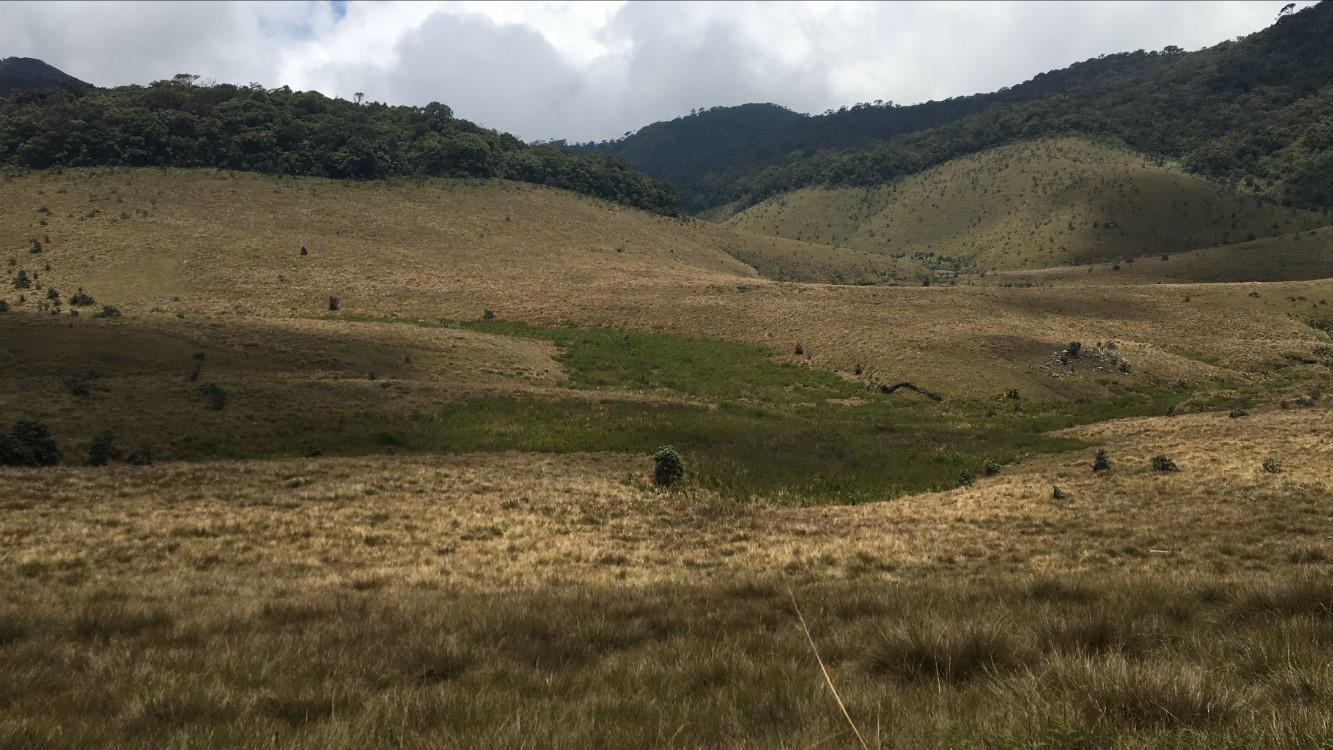|
Plain Laughingthrush
The plain laughingthrush or Père David's laughingthrush (''Pterorhinus davidi'') is a species of bird in the family Leiothrichidae. It is endemic to central and northeastern China. Its natural habitat is temperate forests. Taxonomy The plain laughingthrush was described by the English zoologist Robert Swinhoe in 1868 from a specimen collected in Beijing, China. He coined the binomial name ''Pterorhinus davidi''. The specific epithet honours the French missionary Armand David (1826-1900) who worked in China between 1858 and 1874. This species was normally placed in the genus ''Garrulax'' but following the publication of a comprehensive molecular phylogenetic study in 2018, the genus ''Pterorhinus ''Pterorhinus'' is a genus of passerine birds in the laughingthrush family Leiothrichidae. Taxonomy The genus was erected by the English zoologist Robert Swinhoe in 1868 with the plain laughingthrush (''Pterorhinus davidi'') as the type species. ...'' was resurrected and plain laug ... [...More Info...] [...Related Items...] OR: [Wikipedia] [Google] [Baidu] |
Robert Swinhoe
Robert Swinhoe FRS (1 September 1836 – 28 October 1877) was an English diplomat and naturalist who worked as a Consul in Formosa. He catalogued many Southeast Asian birds, and several, such as Swinhoe's pheasant, are named after him. Biography Swinhoe was born in Calcutta where his father, who came from a Northumberland family, was a lawyer. There is no clear record of the date of his arrival in England, but it is known he attended the University of London, and in 1854 joined the China consular corps. He was stationed to the remote port of Amoy, some 300 miles to the northeast of Hong Kong, in 1855. While at this port he not only mastered the Chinese language (both official Mandarin and the local Amoy dialect), but also initiated a detailed and authoritative understanding of the ornithology of eastern China. In March, 1856, Swinhoe made an "adventurous" visit to the camphor districts of northwestern Formosa on board a lorcha, a hybrid vessel utilizing a European hull an ... [...More Info...] [...Related Items...] OR: [Wikipedia] [Google] [Baidu] |
Specific Epithet
In taxonomy, binomial nomenclature ("two-term naming system"), also called nomenclature ("two-name naming system") or binary nomenclature, is a formal system of naming species of living things by giving each a name composed of two parts, both of which use Latin grammatical forms, although they can be based on words from other languages. Such a name is called a binomial name (which may be shortened to just "binomial"), a binomen, name or a scientific name; more informally it is also historically called a Latin name. The first part of the name – the '' generic name'' – identifies the genus to which the species belongs, whereas the second part – the specific name or specific epithet – distinguishes the species within the genus. For example, modern humans belong to the genus ''Homo'' and within this genus to the species ''Homo sapiens''. '' Tyrannosaurus rex'' is likely the most widely known binomial. The ''formal'' introduction of this system of naming species is credi ... [...More Info...] [...Related Items...] OR: [Wikipedia] [Google] [Baidu] |
Birds Described In 1868
Birds are a group of warm-blooded vertebrates constituting the class Aves (), characterised by feathers, toothless beaked jaws, the laying of hard-shelled eggs, a high metabolic rate, a four-chambered heart, and a strong yet lightweight skeleton. Birds live worldwide and range in size from the bee hummingbird to the ostrich. There are about ten thousand living species, more than half of which are passerine, or "perching" birds. Birds have whose development varies according to species; the only known groups without wings are the extinct moa and elephant birds. Wings, which are modified forelimbs, gave birds the ability to fly, although further evolution has led to the loss of flight in some birds, including ratites, penguins, and diverse endemic island species. The digestive and respiratory systems of birds are also uniquely adapted for flight. Some bird species of aquatic environments, particularly seabirds and some waterbirds, have further evolved for swimming. Bi ... [...More Info...] [...Related Items...] OR: [Wikipedia] [Google] [Baidu] |
Endemic Birds Of China
Endemism is the state of a species being found in a single defined geographic location, such as an island, state, nation, country or other defined zone; organisms that are indigenous to a place are not endemic to it if they are also found elsewhere. For example, the Cape sugarbird is found exclusively in southwestern South Africa and is therefore said to be ''endemic'' to that particular part of the world. An endemic species can be also be referred to as an ''endemism'' or in scientific literature as an ''endemite''. For example ''Cytisus aeolicus'' is an endemite of the Italian flora. ''Adzharia renschi'' was once believed to be an endemite of the Caucasus, but it was later discovered to be a non-indigenous species from South America belonging to a different genus. The extreme opposite of an endemic species is one with a cosmopolitan distribution, having a global or widespread range. A rare alternative term for a species that is endemic is "precinctive", which applies to s ... [...More Info...] [...Related Items...] OR: [Wikipedia] [Google] [Baidu] |
Birds Of Manchuria
Birds are a group of warm-blooded vertebrates constituting the class Aves (), characterised by feathers, toothless beaked jaws, the laying of hard-shelled eggs, a high metabolic rate, a four-chambered heart, and a strong yet lightweight skeleton. Birds live worldwide and range in size from the bee hummingbird to the ostrich. There are about ten thousand living species, more than half of which are passerine, or "perching" birds. Birds have whose development varies according to species; the only known groups without wings are the extinct moa and elephant birds. Wings, which are modified forelimbs, gave birds the ability to fly, although further evolution has led to the loss of flight in some birds, including ratites, penguins, and diverse endemic island species. The digestive and respiratory systems of birds are also uniquely adapted for flight. Some bird species of aquatic environments, particularly seabirds and some waterbirds, have further evolved for swimming. ... [...More Info...] [...Related Items...] OR: [Wikipedia] [Google] [Baidu] |
Pterorhinus
''Pterorhinus'' is a genus of passerine birds in the laughingthrush family Leiothrichidae. Taxonomy The genus was erected by the English zoologist Robert Swinhoe in 1868 with the plain laughingthrush (''Pterorhinus davidi'') as the type species. The name of the genus combines the Ancient Greek ''pteron'' meaning "feather" with ''rhinos'' meaning "nostrils". These species were at one time placed in ''Garrulax'' but following the publication of a molecular phylogenetic study in 2018, ''Garrulax'' was split up and some of the species were moved to the resurrected genus ''Pterorhinus''. At the same time, the four species previously placed in ''Babax'' were moved here. Species The genus contains 23 species: * Rufous-necked laughingthrush, ''Pterorhinus ruficollis'' * Chestnut-backed laughingthrush, ''Pterorhinus nuchalis'' * Black-throated laughingthrush, ''Pterorhinus chinensis'' * Chestnut-capped laughingthrush, ''Pterorhinus mitratus'' * Chestnut-hooded laughingthrush, ''Pterorhin ... [...More Info...] [...Related Items...] OR: [Wikipedia] [Google] [Baidu] |
Molecular Phylogenetic
Molecular phylogenetics () is the branch of phylogeny that analyzes genetic, hereditary molecular differences, predominantly in DNA sequences, to gain information on an organism's evolutionary relationships. From these analyses, it is possible to determine the processes by which diversity among species has been achieved. The result of a molecular phylogenetic analysis is expressed in a phylogenetic tree. Molecular phylogenetics is one aspect of molecular systematics, a broader term that also includes the use of molecular data in taxonomy and biogeography. Molecular phylogenetics and molecular evolution correlate. Molecular evolution is the process of selective changes (mutations) at a molecular level (genes, proteins, etc.) throughout various branches in the tree of life (evolution). Molecular phylogenetics makes inferences of the evolutionary relationships that arise due to molecular evolution and results in the construction of a phylogenetic tree. History The theoretical ... [...More Info...] [...Related Items...] OR: [Wikipedia] [Google] [Baidu] |
Garrulax
''Garrulax'' is a genus of passerine birds in the laughingthrush family Leiothrichidae. Taxonomy The genus ''Garrulax'' was erected by the French naturalist René Lesson in 1831. The type species was designated in 1961 as the rufous-fronted laughingthrush (''Garrulax rufifrons''). The genus previously included more species. Following the publication of a comprehensive molecular phylogenetic study in 2018, ''Garrulax '' was split up and species were moved to the resurrected genera ''Ianthocincla'' and '' Pterorhinus''. ''Garrulax'' species are heavily traded as songbirds. A survey of eight bird markets in Indonesia, carried out in 2014–2015, found 615 laughingthrushes of nine species openly for sale. Much of the trade in these species in Indonesia is illegal and is pushing a number of these species towards extinction. The Sumatran Laughingthrush, for example, is in serious decline due to ongoing and uncontrolled illegal trade in bird markets on the islands of Java and Su ... [...More Info...] [...Related Items...] OR: [Wikipedia] [Google] [Baidu] |
Armand David
Father Armand David (7 September 1826, Espelette – 10 November 1900, Paris) was a Lazarist missionary Catholic priest as well as a zoologist and a botanist. Several species, such as Père David's deer, are named after him — being French for Father David. Biography Born in Espelette near Bayonne, in the north of Basque Country, in Pyrénées-Atlantiques ''département'' of France, he entered the Congregation of the Mission in 1848, having already displayed great fondness for the natural sciences. Ordained in 1851, he was in 1862 sent to Peking, where he began a collection of material for a museum of natural history, mainly zoological, but in which botany, geology, and palaeontology were also well represented. At the request of the French government, important specimens from his collection were sent to Paris and aroused the greatest interest. The Jardin des Plantes commissioned him to undertake scientific journeys through China to make further collection ... [...More Info...] [...Related Items...] OR: [Wikipedia] [Google] [Baidu] |
Binomial Name
In taxonomy, binomial nomenclature ("two-term naming system"), also called nomenclature ("two-name naming system") or binary nomenclature, is a formal system of naming species of living things by giving each a name composed of two parts, both of which use Latin grammatical forms, although they can be based on words from other languages. Such a name is called a binomial name (which may be shortened to just "binomial"), a binomen, name or a scientific name; more informally it is also historically called a Latin name. The first part of the name – the '' generic name'' – identifies the genus to which the species belongs, whereas the second part – the specific name or specific epithet – distinguishes the species within the genus. For example, modern humans belong to the genus ''Homo'' and within this genus to the species ''Homo sapiens''. ''Tyrannosaurus rex'' is likely the most widely known binomial. The ''formal'' introduction of this system of naming species is credit ... [...More Info...] [...Related Items...] OR: [Wikipedia] [Google] [Baidu] |
Plain Laughingthrush MHNT 227 HdB China
In geography, a plain is a flat expanse of land that generally does not change much in elevation, and is primarily treeless. Plains occur as lowlands along valleys or at the base of mountains, as coastal plains, and as plateaus or uplands. In a valley, a plain is enclosed on two sides, but in other cases a plain may be delineated by a complete or partial ring of hills, by mountains, or by cliffs. Where a geological region contains more than one plain, they may be connected by a pass (sometimes termed a gap). Coastal plains mostly rise from sea level until they run into elevated features such as mountains or plateaus. Plains are one of the major landforms on earth, where they are present on all continents, and cover more than one-third of the world's land area. Plains can be formed from flowing lava; from deposition of sediment by water, ice, or wind; or formed by erosion by the agents from hills and mountains. Biomes on plains include grassland ( temperate or subtr ... [...More Info...] [...Related Items...] OR: [Wikipedia] [Google] [Baidu] |



.jpg)
.jpg)



